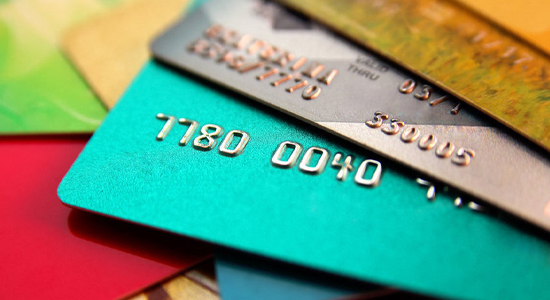

If you have good credit, you’ve got financial power. But how do you know how good your credit actually is?
One key indicator is your credit score – a three-digit number that shows lenders how well you’ve borrowed and paid back money over time. The higher your credit score, the more likely you are to get better interest rates, pay lower finance charges, and have the ability to borrow even more money for larger purchases, like cars and houses.
One of the most common types of credit scores used by lenders is the FICO® Score, which ranges from 300-850. More than two-thirds of Americans have a credit score at or above 670, which is considered “good” by lenders. Approximately 1 in 5 (21 percent) have excellent credit (800+).
Your credit score is fluid and can change every time you borrow money, make a loan payment, or miss a payment. Here are just a few factors that go into calculating your credit score.
- Payment history
- Credit utilization ratio
- Types of credit used
- How long you've been using credit
- Total balances on all debts you owe
- Public records, such as bankruptcies
- The number and recency of credit accounts you've applied for
To qualify for a FICO® Score, you’ll need to have at least one account open for at least six months, and it must have been reported to the credit bureaus within that period of time.
Don’t worry if you don’t currently have credit or your credit score isn’t as high as you’d like it to be. There are steps you can take to start raising your credit score.
1. Pay on time, every time
One of the fastest ways to build good credit is by paying your bills on time. Creditors like to see a solid track record of responsibility. If you miss a payment – even just one – it will stay on your credit report for seven years.
Make paying bills on time your priority. Set calendar reminders to make payments and allow time for your payment to get to your lender before the due date – it could take up to seven days. Or, if you want to save a stamp, use our online bill pay service to make and schedule payments. You can even schedule recurring payments, which allows you to “set it and forget it" so you won't miss a due date.
If you’ve experienced a financial hardship or setback, don’t wait to talk to your creditors. Contact each lender as soon as possible, explain what’s going on, and ask what programs are available to support you. If you have a 1st United loan or credit card and need assistance, please contact us so we can see how we can help.
2. Lower your credit utilization rate
Your credit utilization rate gives lenders a look at how well you’re using the credit that’s available to you. It’s calculated by dividing your debt by the total amount of credit available to you. For example, if you have two credit cards with a total of $20,000 in available credit and a total balance of $5,000, your credit utilization rate is 25 percent.
A credit utilization rate (or credit utilization ratio) of 30 percent or less is considered “good”; 1-10% is better. It shows lenders you manage your money and that you haven’t maxed out your credit cards. This is extremely important because your credit utilization rate is another significant factor in calculating your credit score.
Here are a few ways to improve your credit utilization rate and potentially boost your credit score:
- Pay off debt. As you reduce your total debt, your total amount of available credit stays the same. This means you’ll have a lower credit utilization rate, which looks better to lenders. Using the example from earlier, if you have $5,000 total debt and pay off $1,000, you’d now owe just $4,000. Divide that by your $20,000 in total credit available, and you’ve improved your credit utilization rate from 25 percent to 20 percent.
- Once you pay off revolving credit balances, like credit cards, personal lines of credit, or home equity lines of credit, don’t close them because this lowers the total amount of credit available to you which impacts your credit utilization rate. Using the same example, let’s say the $1,000 you paid off was the last remaining balance on a credit card with an $8,000 limit. If you close that card, your total available credit drops to $12,000 which makes your utilization rate jump from 20 percent to 33 percent
- Increasing your credit limit will lower your credit utilization. The best way to do this is to ask your current lender for an increase. They already have access to your payment history so they might be able to honor the increase without affecting your credit in the same way. You could also apply for new credit – such as a department store credit card – but that lender will have to look at your credit history, which adds a hard inquiry on your credit report. Hard inquiries slightly lower your credit score and stay on your credit report for two years.
3. Explore alternative lending options
Your credit score, total available credit, and credit utilization rate can be improved through other methods, too:
- For many, applying for a car loan is their first lending experience – and it’s a great way to build credit. Auto loans are available for both new and used cars, and they offer low rates and fixed payment amounts over a set period of time. For example, you might pay $275 per month for 60 months. The exact amount depends on the price of the vehicle, as well as the specific interest rate you receive. When you make your car, truck, or motorcycle payments on time, your credit score will start to rise.
- Personal loans are one-time loans that can be used for any reason – from paying medical bills to landscaping your backyard. Like an auto loan, a personal loan features fixed rates and terms, meaning you’ll receive money once, then pay it back in equal amounts over a set period of time.
- With a personal line of credit, you can borrow up to a predetermined amount of money, repay it, and borrow up to that amount again. This makes a personal line of credit ideal for things like annual college tuition payments or a series of home renovation projects.
If you’re an inexperienced borrower or one with less-than-healthy credit, there are several options that can help you build or improve your credit score.
- A share-secured loan allows you to borrow up to 100 percent of the balance held in a savings account while you continue to earn interest on that money. So, if you had $3,000 in savings, you could receive a share-secured loan of up to $3,000 (because the loan is protected by the money you have in savings).
- A secured credit card allows you to obtain a credit card after making a refundable security deposit that serves as “collateral” for your account. This helps protect the creditor if you have difficulties managing your card or making payments.
- A joint credit card can be useful in helping you build or restore your credit. Basically, you’re partnering up with someone (usually a spouse or family member) to share an account and all the responsibilities that come with it. If you get a joint credit card, remember that both account holders are responsible for every charge as well as the entire balance due. Any charges and payments (or missed payments) will affect the credit history and credit scores of both account holders.
4. Review your credit report
Your credit report is like the report card you received in school. It shows how well you’ve done in terms of borrowing and repaying money. Each account (open or closed) you’ve ever had is included, along with any nonpayment information.
Regularly review your credit report for any inaccuracies – especially those related to your repayment history. If you don’t recognize an account listed on your credit report, contact that creditor immediately because it could be a sign of identity theft.
In normal circumstances, you’re allowed to obtain a free copy of your credit report once a year from each of the three major credit bureaus: Equifax, Experian, and TransUnion.
5. Protect yourself
Sign up for account alerts on all your bank, credit union, and credit card accounts. That way, you will be alerted if a purchase is made or attempted online, by phone, or even overseas. You should also monitor your accounts regularly. If you spot unusual activity on your credit card, contact your creditor immediately. You can even lock your credit report so that no one can attempt to obtain credit in your name.
Let us help you build credit today
At 1st United Credit Union, we want to help you improve your financial well-being. That’s why we offer Visa Platinum and Visa Platinum Rewards credit cards with no annual fee that can help you boost your credit score while taking advantage of a host of credit card benefits, like free fraud text alerts and rewards points for every dollar you spend. View rates or apply online today!
FICO is a registered trademark of Fair Isaac Corporation in the United States and other countries.
Share Options
Five Best Ways to Build Credit
Recommended for You
Locations
Find a branch or ATM near you!
Get Started
Open an account from your couch.
Financial Education
Stay informed about the latest news and scams, and learn how to reach your goals.
Subscribe to Our Blog
* Required
Thank you.
We appreciate your interest.

Your loan – personalized!
Whether you're planning your next vacation, staycation, home remodel, or simply want to consolidate debt, we have the financing for you.

